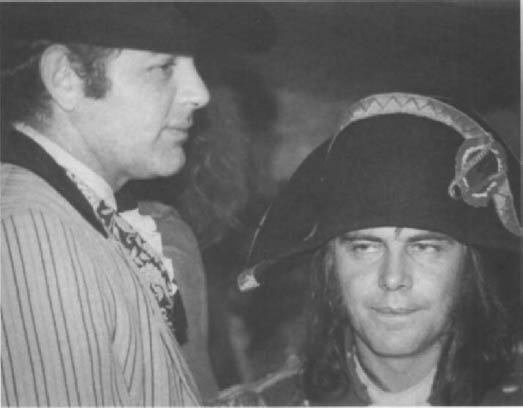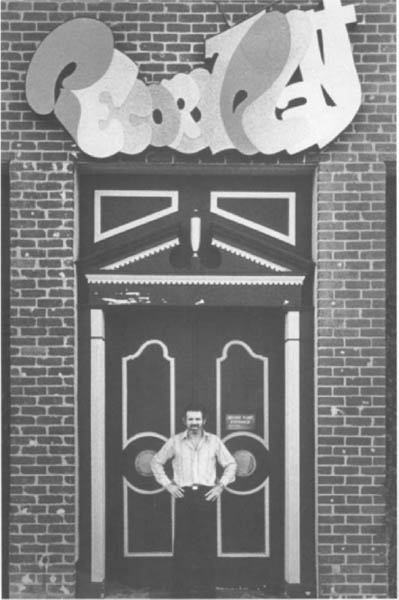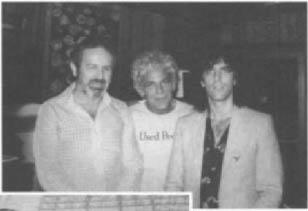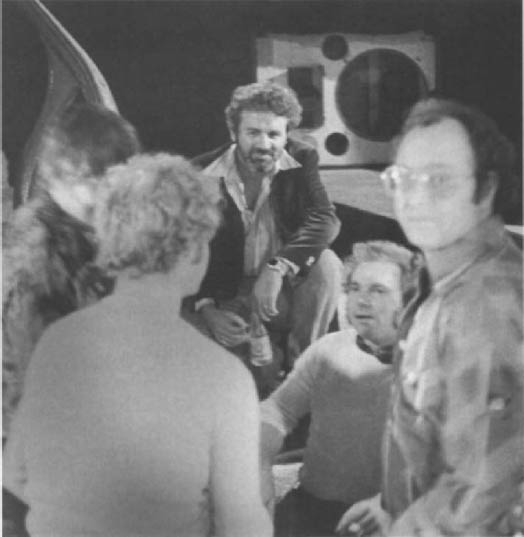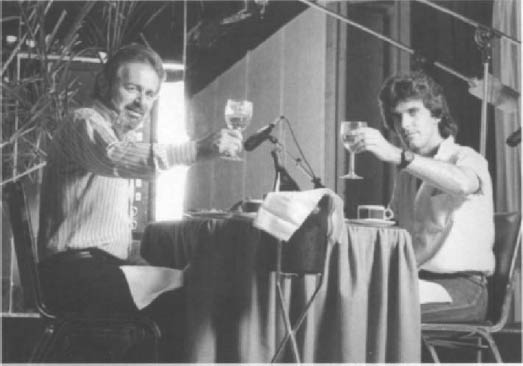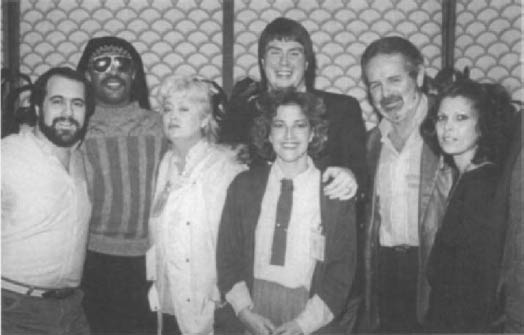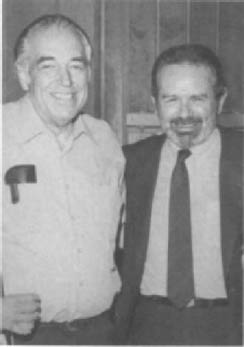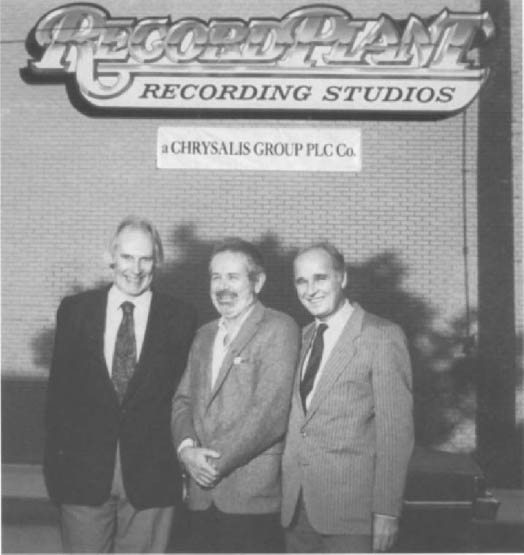20
Market-Driven Profit Centers—Finding Your Niche
Being a businessman in a studio full of artists, producers, and engineers has always been a challenge for me. First of all, they think I am from another world because I don't speak their technical language, my ears don't hear anything close to what they hear, and when I start talking about “business stuff,” they tune out in five seconds or less. Worse than that, when they have tried to teach me their craft by allowing me to assist on a session, I've always managed to erase a track by pushing the wrong button on the tape machine. I was ejected from the control room and told not to return.
But when payday came, I was a genius—because the checks were always good at the bank. “How did you do that?” they would ask. “I can't even balance my checkbook, and I have never known how much it costs me to live. I just know I never have enough money!” Such vindication justifies the two necessary “people” elements in a recording studio: the creative people who make the music and the businesspeople who find a way to collect the money, pay the bills, and magically get the banker to add more money to the account when overdraft protection is already at its maximum. I am obviously one of the latter.
I am going to attempt to explain what I do in as simple a manner as an audio engineer might use to explain to me how a parametric equalizer operates. George Massenburg, the inventor of same, tried this with me once. He finally left the room, almost in tears.
My hope is to give you some helpful hints for survival in the studio business jungle. By applying some very expensive consultant info from the “suits” who charge enormous fees until you cry, you can make your studio a better business than your competitor down the street. The key phrase is K.I.S.S.: Keep It Simple, Stupid! Simple is good. Complicated is bad. This is my first axiom for business success. The items to be discussed in this chapter include niche marketing, market-driven success, and performance-based pricing. My hope is that you will learn how to remain flexible in your business in order to achieve success.
First, we can all agree that there are a finite number of clients whom we all must share. The question then becomes: “What should I do to get my share (or more) so I can stay in business?” The simple answer is to specialize in a segment of the industry where you can offer something unique. What do you do better than your competition? Who are the clients who are most likely to utilize these special services, and where are they located? How do you find them and motivate them to come into your studio, rather than the facilities of your competitors?
Here is the basic question to ask yourself when you are developing your studio's marketing plan, after determining your special niche: What it is that you do better? Some of the considerations are:
1. Location: If you are in the advertising or postproduction audio business, the key studios are usually clustered together because of the need for the client to move the various aspects of the project quickly from specialist to specialist in order to meet a deadline that always seems to be yesterday.
2. Talent: If you have the best audio engineers and technicians in your geographical market, the best clients will follow them.
3. Environment: If your equipment, acoustics, technical preventative maintenance, mellow atmosphere, and pricing are better than the competition's, it is difficult for you not to win the race for clients.
4. Financing: If your businesspeople can balance all of the above and keep you profitable, with a sufficient financial cushion and performance-based pricing (see further details below), you now have a real winner!
5. Diversification: Taking all of the above into account, the maximum utilization of these special talents and equipment needs to be twisted and turned. Squeeze out every possible way to use what you have to make money from audio recording. This, most often, is the most difficult part for the creative guys to understand. If you are familiar with utilizing your equipment and personnel in a certain way, it is sometimes difficult to understand that by changing the combination in order to use these elements more efficiently, you will generate more revenue—most of which will be new profit.
An example would be that a mastering studio or postproduction house should always make tape copies. It is silly to think that a client, after mastering his record or getting the final mix on his commercial, should have to take the masters to a separate duplication facility in order to make the copies necessary to send to everyone who has to approve the project before it is aired. Yet, I bet you all know of some businesses who just don't understand this simple concept of taking care of the customer's needs.
A simple rule of thumb is: If your equipment is not working 24 hours a day, 7 days per week, it is underutilized, and it should be your goal to correct that.
Record Plant founders Chris Stone (left) and Gary Kellgren at the Sausalito Record Plant Halloween opening costume ball, October 31,1972. John and Yoko purportedly attended the historic event dressed as trees. Today “The Plant” remains one of the top studios in the San Francisco Bay area.
Record Plant New York opening party, March 19, 1968: Chris Stone with Record Plant banker.

Record Plant Los Angeles opening party, December 4, 1969. Company “angel” Ancky Johnson is cutting cake. Left to right are partners Tom Butler, corporate attorney; Tom Wilson, renowned CBS A&R Director (Zappa, Dylan, etc.); Ben Johnson; Chris Stone; and Gary Kellgren.

Los Angeles opening: Greg Thomas, Chris Stone arid Ancky Johnson.
NYC opening: John Revson, George Hamilton, Gary Kellgren.
Chris Stone, in stylish bell-bottoms, outside L.A. Record Plant, 1971.
Chris Stone, recording studio designer Tom Hidley. music producer Ron Nevison, L A Record Plant, 1973.
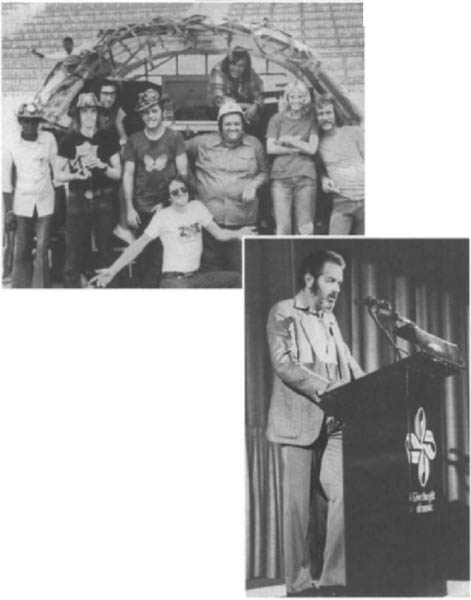
Zaire, Africa, 1974. The “Rumble in the Jungle” Record Plant remote recording crew.
Chris Stone, president of SPARS, addressing NARM convention during the introduction of the Compact Disc. 1982.
In the recording area known as “The Pit” at Sausalito Record Plant, 1975. (Counterclockwise from top) Chris Stone, Gary Kellgren, music producer Stewart Levine, artist Van Morrison, and president of Elektra Records, Bob Krasnow.
Chris Stone and music producer Ron Nevison posing on the stage of Record Plant Los Angeles, Studio C, for a special feature in Billboard, late 1970s.

Record Plant, Los Angeles. Presentation of the Ampex Golden Reel Award to the group Cheap Trick, 1981. Left to right: audio engineer Michael Bireger, Chris Stone, Ampex salesperson Kim McKenzie, Cheap Trick's Rick Nielson, audio engineer Gary Ladinsky.
Recording artist Stephen Stills (left) and engineer Michael Braunstein at the introduction of the 3M 32-track digital tape recorder, Record Plant Los Angeles, Studio C, February, 1979.
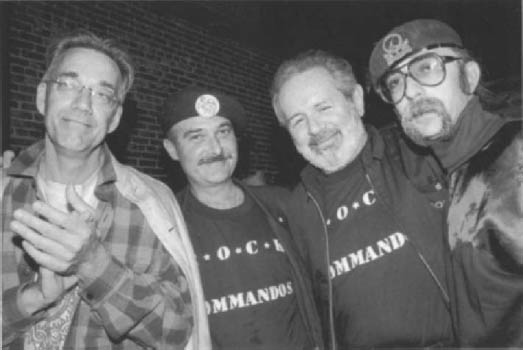
During the filming of the documentary “Rock Commandos” at Club Lingerie on Sunset Blvd, L.A., 1985; Ray Manzarek of The Doors, Mr. Bonzai (David Goggin), Chris Stone, Jeff (Skunk) Baxter with the Record Plant Remote truck.
“Live from the Record Plant/’ 1984, with special guest Stevie Wonder, Chris Stone, Ruth Robinson of the Hollywood Reporter, show producer Patrick Griffith, and RKO personnel for the 125-station broadcast each Sunday evening.
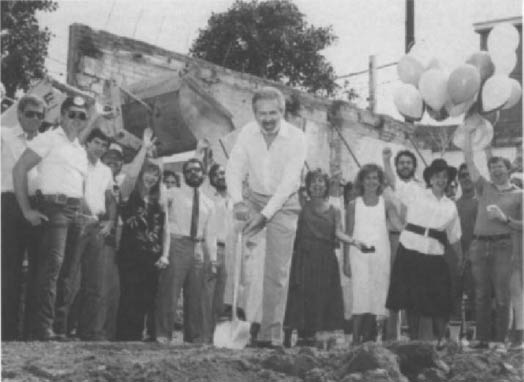
Chris Stone at groundbreaking for new Los Angeles Record Plant, July, 1985, with family members Gloria Stone, Samantha Stone, staff and friends.
Chris Stone with recording legend Wally Heider, grand opening of Record Plant Scoring, Stage M, Paramount Pictures, 1982.
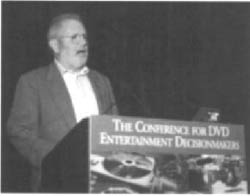
Chris Stone addresses DVD 1999 conference, L.A., August, 1999, regarding future of music formats and impact on CD sales.
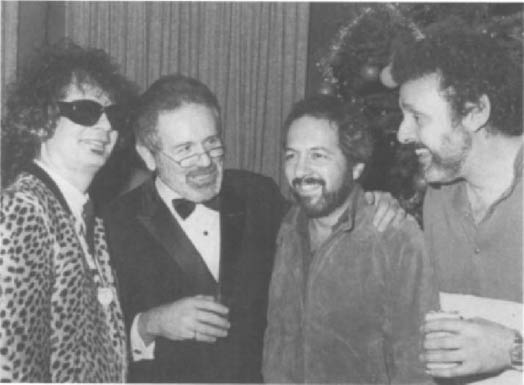
Record Plant Los Angeles (3rd Street), “Last Jam” reunion concert before moving to new facilities, December 18, 1985. (Left to right) Al Kooper, Chris Stone, music producers Tom Werman (Judas Priest) and Bill Szymczyk (The Eagles).
Chris Stone with Herbie Hancock, MacMusic Fest 3.0 computer music convention at Stage M, Paramount Pictures, Hollywood, Summer, 1989.

Opening press conference, founding of Music Producers Guild of the Americas (MPGA) at AES, NYC, September, 1997.
December 8, 1987, the day Record Plant was sold to Chrysalis Records. (Left to right) Sir George Martin, Chris Stone, John Burgess (Martin's manager, founder and managing director of AIR Studios, London).
The boss in his office with over 50 Record Plant platinum records, Los Angeles, Summer, 1989.
Your marketing plan necessitates taking all of the above information and presenting it to your potential clients through the available channels of promotion: PR, hanging out, posting recording credits and charted hits, T-shirts and swag, and, of course, entertaining the clients. Listen carefully. Can you hear the sound of money?
Two of the major business concepts that many studio operators don't seem to understand are: (1) be market driven and (2) fully utilize performance-based pricing. Being market driven means that you must develop superior skills in understanding and satisfying your clients. Do it their way, if it in any way makes any sense. Clients come to you because you know how to service them better than your competitor. They stay with you because you understand and can satisfy their audio needs better than your competitors. Most of you understand how to make your client a hero with his or her clients. Your job is to find out the client's needs and fill them, not to produce a product and then attempt to sell it to him or her. The cost of keeping clients using your facility is much less than the cost of finding new clients and convincing them to use your facility. Your clients should be your best advertising medium. Why? Because everyone they talk to will listen to them and believe them. Performance-based pricing means setting your prices for your services based not on your cost for providing those services, but rather on your client's and the market's perceived value for those services. Charge what the market will bear and continually try to justify increasing your prices on the basis of real or apparent costs. A classic example is the explanation to the client about why the charge for tape is more than your cost for the material. The key argument we successfully used at Record Plant was that if you brought your own tape and it was defective, you still paid for the time. If you used our tape and it was defective, we paid for the time. The cost saving vs. the potential additional cost to the client in this situation quickly resulted in the client using our tape. The smart client also knew that we were in control of whether or not the tape was defective. Think about it.
As a conclusion to our discussion of how to maximize your profits with a given quantity of equipment, space, and time, using the business concepts we have been talking about, let's focus on the need for flexibility. By flexibility, I mean not only the ability to change your mode of operation to meet your client's needs, (that is, a three-piece jazz combo vs. a film scoring date) but also to be flexible enough to recognize when changes are taking place in your marketplace and to accommodate them quickly, economically, and with the minimum amount of disruption to your business—when the timing is right.
DVD, high-definition television, and CD-ROM are classic examples. They became expansion targets for recording studios. Those who invest too soon find themselves with obsolete equipment before the profit curve appears. Those who wait too long miss the curve entirely. Those who improperly estimate consumer acceptance, which determines the “product life,” are hurt badly. Those who believe in “once burned, twice cautious” are asking to fail as new technology develops.
Audio for television is another classic example. Many European music studios decided stereo TV sound was not for them. As a result, the television postproduction studios diversified into professional audio and took the market from the music studios. He who hesitates is lost.
Now we are dealing with new opportunities ushered in by such developments as DVD and the Internet. Who is doing the audio? It differs by market. In some it is the music recording studios; in others it is the postproduction facilities. Timing is everything. If you move aggressively into a new business channel by refocusing your people resources and your facility assets, you can win! What is your strategy?

